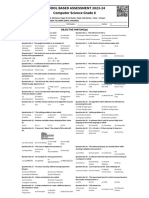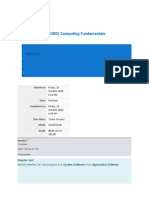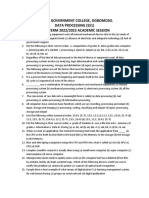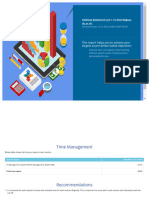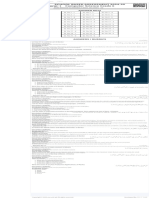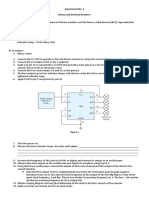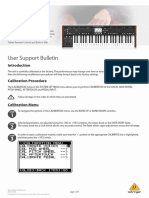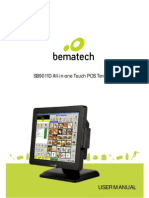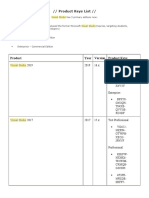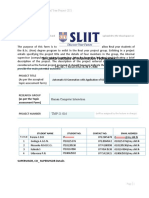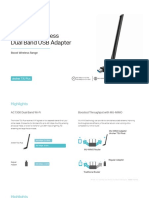SCHOOL-BASED ASSESSMENT (SBA) - 2025
END-OF-YEAR ASSESSMENT
SUBJECT: COMPUTER SCIENCE FINAL TERM
GRADE-6
[Paper A: 48 Marks, Paper B: 52 Marks, Total: 100 Marks], Time = 3 hours
School Name: GHS CHAK 29 GB SATIANA FSD (EMIS: 33120715)
Student Name : Roll Number : Section :
OBJECTIVE PART(MCQs)
Question No.1 : ICT stands for: Question No.2 : The father of computer is:
(a) Information and Cloud (b) Internet and Communication (a) John Von Neumann (b) Charles Babbage
Technology Technology (c) Alan Turing (d) Grace Hopper
(c) Information and (d) Information and Computer
Communication Technology Technology
Question No.3 : The procedure of converting data into information Question No.4 : The numbers of computer generations are:
is known as: (a) 3 (b) 4 (c) 5 (d) 6
(a) Collection (b) Output (c) Processing (d) Storage
Question No.5 : File in a computer is: Question No.6 : Identify the operating system used in mobile
(a) A software device (b) A link to a website phones.
(c) A storage device (d) Storage unit of data (a) Windows (b) Unix
(c) Android (d) Linux
Question No.7 : The function of shut down is: Question No.8 : A folder is also called:
(a) Open programs (b) Search for files (a) File (b) Directory (c) Shortcut (d) Drive
(c) Turn off computer (d) Turn on computer
Question No.9 : If you have to solve an algorithmic problem, will Question No.10 : Deconstruction is also known as:
follow a number of steps: (a) Identification (b) Definition
(a) 5 (b) 6 (c) 7 (d) 8 (c) Decomposition (d) Analysis
Question No.11 : The idea of internally stored program was Question No.12 : Programs are created using specific languages,
introduced by: called:
(a) James D Foley (b) Edward (a) English Language (b) Programming Language
(c) John Von Neumann (d) John Vincent (c) Urdu Language (d) Persian Language
Question No.13 : An algorithm after writing in any programming Question No.14 : A finite sequence of instructions to solve a
language, it becomes : specific task is called:
(a) Statment (b) Flowchart (a) Solution (b) Flowchart (c) Algorithm (d) Data
(c) Program (d) Syntax
Question No.15 : Machine language is classified as: Question No.16 : During the execution of a program, the value of
(a) Slow level language (b) High-level Langauge constant remains:
(c) Assembly language (d) Low-level language (a) Random (b) High (c) Consistent (d) Low
Question No.17 : A variable used to store information is called: Question No.18 : The first step of debugging a program is:
(a) Constant (b) Value (c) Character (d) Double (a) Prove the Analysis (b) Fix and Validate
(c) Identifying the problem (d) Deleting the program
Question No.19 : We can create the program in scratch: Question No.20 : The process of fixing errors in programming is:
(a) Block palette (b) Program (c) Script area (d) Stage (a) Debugging (b) Syntax (c) Decoding (d) Analyzing
Question No.21 : A digital citizen is someone who: Question No.22 : Piracy is:
(a) Avoid using internet (b) Use technology responsibly (c) Illegal
(a) Security (b) Privacy (d) Accuracy
(c) Focuse on online gaming reproducton
(d) Do not engage in society
Question No.23 : Responsible digital citizenship means: Question No.24 : Being a safe and responsible online digital
(a) Behaving illegally (b) Behaving lawfully citizenship we must:
(c) Behaving rude (d) Behaving politely (a) share personal information (b) behaving lawfully
(c) speak to strangers online (d) behaving rudely
Question No.25 : An entrepreneur is one who: Question No.26 : Making your own business after learning from
(a) works for a company (b) starts his own business others mistakes is the type of enterpreneurship:
(c) invests in stocks (d) works in a bank (a) researcher (b) buyer
(c) imitator (d) innovative
�Question No.27 : In e-business, information collection mode is Question No.28 : Entrepreneurial process ends on step:
mostly: (a) resourcing (b) harvesting
(a) direct (b) indirect (c) online (d) physical (c) company management (d) discovery
Question No.29 : Asana mobile application is used for: Question No.30 : The CEO of investor lounge is:
(a) managing business (b) image editing (a) Nabila maqsood (b) Baqar jafri
(c) video editing (d) playing games (c) Elon musk (d) Noman Sikandar
Question No.31 : The application that increases business Question No.32 : The importance of using critical thinking on the
productivity at lower cost is: Internet is:
(a) google (b) microsoft (a) promoting misinformation (b) ignoring digital issues
(c) tiktok (d) slack
Chrome Office (c) facilitating decision making (d) limiting access to technology
SUBJECTIVE PART(CRQs)
Question No: 33
a ) Write the names of any five ICT devices. (5 Marks)
b ) Write a short note on booting. (5 Marks)
Question No: 34
a ) Write down the five benefits of algorithmic thinking. (5 Marks)
b ) Write down the algorithm to add three numbers and print their sum. (5 Marks)
Question No: 35
a ) Differentiate between simple and complex problems. (5 Marks )
b ) Define Algorithm and use of Algorithm (5 Marks)
Question No: 36
a ) Why do we need debugging? (2 Marks)
b ) Differentiate between e-business and traditional business. (4 Marks)
c ) List the names of four operations of computer. (4 Marks)
Question No: 37
a ) Define digital citizenship and write any four elements of digital citizenship. (6 Marks)
b ) Write any three health-related issues of using ICT devices. (6 Marks)







